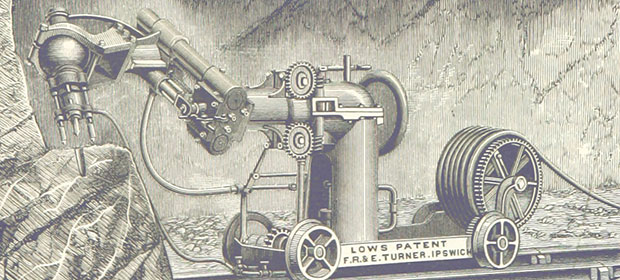"Big Data Components" entries

Get started with cloud-based data science
Learn how to deploy machine learning solutions using Azure ML.
Cloud-based machine learning platforms, like Microsoft’s Azure Machine Learning (Azure ML), provide a simplified path to create and deploy analytic solutions. Azure ML is a fully managed and secure machine learning platform that resides within the Microsoft Cortana Analytics Suite.
Azure ML workflows (known as “experiments”) are constructed using a combination of drag-and-drop modules, SQL, R, and Python scripts. The wide range of built modules support the typical steps in a machine learning workflow, from data ingestion and data munging to model construction and cross validation.
Once your Azure ML experiment is ready, there are several options to deploy it. Azure ML experiments can access large-scale data stored in Azure Blob storage, Azure SQL and Hive, to name a few options. Similarly, your experiment can write results back to multiple scalable Azure storage options.

Specialized and hybrid data management and processing engines
A new crop of interesting solutions for the complexity of operating multiple systems in a distributed computing setting.
The 2004 holiday shopping season marked the start of Amazon’s investigation into alternative database technologies that led to the creation of DynamoDB — a key-value storage system that went onto inspire several NoSQL projects.
A new group of startups began shifting away from the general-purpose systems favored by companies just a few years earlier. In recent years, we’ve seen a diverse set of DBMS technologies that specialize in handling particular workloads and data models such as OLTP, OLAP, search, RDF, XML, scientific applications, etc. The success and popularity of such systems reinforced the belief that in order to scale and “go fast,” specialized systems are preferable.
In distributed computing, the complexity of maintaining and operating multiple specialized systems has recently led to systems that bridge multiple workloads and data models. Aside from multi-model databases, there are an emerging number of storage and compute engines adept at handling different workloads and problems. At this week’s Strata + Hadoop World conference in NYC, I had a chance to interact with the creators of some of these new solutions.
OLTP (transactions) and OLAP (analytics)
One of the key announcements at Strata + Hadoop World this week was Project Kudu — an open source storage engine that’s good at both table scans (analytics) and random access (updates and inserts). Its creators are quick to point out that they aren’t out to beat specialized OLTP and OLAP systems. Rather, they’re shooting to build a system that’s “70-80% of the way there on both axes.” The project is very young and lacks enterprise features, but judging from the reaction at the conference, it’s something the big data community will be watching. Leading technology research firms have created a category for systems with related capabilities: HTAP (Gartner) and Trans-analytics (Forrester).

Accelerating real-time analytics with Spark
Integration of the data supply chain is key to a reliable and fast big data analytics deployment.
Watch our free webcast “Accelerating Advanced Analytics with Spark” to learn about the architecture, applications, and best practices of Apache Spark.
Apache Hadoop is a mature development framework, which coupled with its large ecosystem, and support and contributions from key players such as Cloudera, Hortonworks, and Yahoo, provides organizations with many tools to manage data of varying sizes.
In the past, Hadoop’s batch-oriented nature using MapReduce was sufficient to meet the processing needs of many organizations. However, increasing demands for faster processing of data have emerged. These demands have been driven by recent developments in streaming technologies, the Internet of Things (IoT) and real-time analytics, to name just a few. These new demands have required new processing models. One significant new technology today that is being used to meet these demands and is gaining considerable interest and widespread support is Apache Spark. Spark’s speed and versatility make it a key part of today’s big-data processing stack in industries from energy to finance. Read more…

Apache Drill: Tracking its history as an open source community
A strong, open user community needs to be fostered to reveal its potential.
A strong user community is essential to releasing the full potential of an open source project, and this influence is particularly important now for the newly developed Apache Drill project. Drill is a highly scalable SQL query engine for interactive access to a wide range of big data sources and formats. Some of the ways users have an impact are an expected part of the development process: by trying the software and reporting their experiences and use cases, users in the Drill community provide valuable feedback to developers as well as raise awareness with a larger audience of what this big data tool has to offer.
This advantage was especially important with early versions of the software; users have helped development of Drill from early days by reporting bugs and praising features that they like. And now, as Drill is reaching maturity and refinement, users likely will also provide additional innovations: experimenting with Drill in their own projects, they may find new ways to use it that had not occurred to the developers.
Drill’s flexibility and extensibility lend themselves to innovation, but there’s also a natural tendency for this type of change because the big data and Hadoop landscape also are evolving quickly. In the case of Drill, we’re seeing the “unexpectedness benefit” of openness: the community gets out ahead of the leadership in use cases and technological change.
The first big Apache Drill design meeting in September 2012 in San Jose set the tone of openness and inclusion. This was an open meeting, organized by Drill co-founder Tomer Shiran and Drill mentor Ted Dunning, and sponsored by MapR Technologies through the Bay Area Apache Drill User Group. More than 60 people attended in person, and Webex connected a larger, international audience. I recall that in addition to speaker-led presentations and discussion, long strips of paper were mounted around the room for participants to write on during breaks in order to provide ideas or offer specific ways they might want to be involved. Practical steps like this surfaced good ideas immediately, and signaled openness for future ones. Read more…

Big data is changing the face of fashion
How the fashion industry is embracing algorithms, natural language processing, and visual search.
Download Fashioning Data: A 2015 Update, our updated free report exploring data innovations from the fashion industry.
Fashion is an industry that struggles for respect — despite its enormous size globally, it is often viewed as frivolous or unnecessary.
And it’s true — fashion can be spectacularly silly and wildly extraneous. But somewhere between the glitzy, million-dollar runway shows and the ever-shifting hemlines, a very big business can be found. One industry profile of the global textiles, apparel, and luxury goods market reported that fashion had total revenues of $3.05 trillion in 2011, and is projected to create $3.75 trillion in revenues in 2016.
Solutions for a unique business problem
The majority of clothing purchases are made not out of necessity, but out of a desire for self-expression and identity — two remarkably difficult things to quantify and define. Yet, established brands and startups throughout the industry are finding clever ways to use big data to turn fashion into “bits and bytes,” as much as threads and buttons.
In the newly updated O’Reilly report Fashioning Data: A 2015 Update, Data Innovations from the Fashion Industry, we explore applications of big data that carry lessons for industries of all types. Topics range from predictive algorithms to visual search — capturing structured data from photographs — to natural language processing, with specific examples from complex lifecycles and new startups; this report reveals how different companies are merging human input with machine learning. Read more…

Showcasing the real-time processing revival
Tools and learning resources for building intelligent, real-time products.

Register for Strata + Hadoop World NYC, which will take place September 29 to Oct 1, 2015.
A few months ago, I noted the resurgence in interest in large-scale stream-processing tools and real-time applications. Interest remains strong, and if anything, I’ve noticed growth in the number of companies wanting to understand how they can leverage the growing number of tools and learning resources to build intelligent, real-time products.
This is something we’ve observed using many metrics, including product sales, the number of submissions to our conferences, and the traffic to Radar and newsletter articles.
As we looked at putting together the program for Strata + Hadoop World NYC, we were excited to see a large number of compelling proposals on these topics. To that end, I’m pleased to highlight a strong collection of sessions on real-time processing and applications coming up at the event. Read more…

What it means to “go pro” in data science
A look at what it takes to be a professional data science programmer.
 My experience of being a data scientist is not at all like what I’ve read in books and blogs. I’ve read about data scientists working for digital superstar companies. They sound like heroes writing automated (near sentient) algorithms constantly churning out insights. I’ve read about MacGyver-like data scientist hackers who save the day by cobbling together data products from whatever raw material they have around.
My experience of being a data scientist is not at all like what I’ve read in books and blogs. I’ve read about data scientists working for digital superstar companies. They sound like heroes writing automated (near sentient) algorithms constantly churning out insights. I’ve read about MacGyver-like data scientist hackers who save the day by cobbling together data products from whatever raw material they have around.
The data products my team creates are not important enough to justify huge enterprise-wide infrastructures. It’s just not worth it to invest in hyper-efficient automation and production control. On the other hand, our data products influence important decisions in the enterprise, and it’s important that our efforts scale. We can’t afford to do things manually all the time, and we need efficient ways of sharing results with tens of thousands of people.
There are a lot of us out there — the “regular” data scientists; we’re more organized than hackers but with no need for a superhero-style data science lair. A group of us met and held a speed ideation event, where we brainstormed on the best practices we need to write solid code. This article is a summary of the conversation and an attempt to collect our knowledge, distill it, and present it in one place. Read more…

Hadoop for business: Analytics across industries
The O’Reilly Podcast: Ben Sharma on the business impact of Hadoop and the evolution of tools
In this episode of the O’Reilly Podcast, O’Reilly’s Ben Lorica chats with Ben Sharma, CEO and co-founder of Zaloni, a company that provides enterprise data management solutions for Hadoop. Sharma was one of the first users of Apache Hadoop, and has a background in enterprise solutions architecture and data analytics.
Before starting Zaloni, Sharma spent many years as a business consultant and began to see that companies across industries were struggling to process, store, and extract value from their data. Having worked extensively in telecom, Sharma helped equipment vendors deploy large-scale network infrastructures at carriers across the world. He began to see how Hadoop could have an impact in the business analytics aspect of companies, not just in IT.
In this interview, Lorica and Sharma discuss the early days of Hadoop and how businesses across industries are benefitting from Hadoop. They also discuss the evolution of tools in the space and how more companies are moving toward real-time decision-making with the growth of streaming tools and real-time data. Read more…

How an enterprise begins its big data journey
An ETL offload solution addresses the challenges of data overload, rising costs, and the skills gap.
As the amount of data continues to double in size every two years, organizations are struggling more than ever before to manage, ingest, store, process, transform, and analyze massive data sets. It has become clear that getting started on the road to using data successfully can be a difficult task, especially with a growing number of new data sources, demands for fresher data, and the need for increased processing capacity. In order to advance operational efficiencies and drive business growth, however, organizations must address and overcome these challenges.
In recent years, many organizations have heavily invested in the development of enterprise data warehouses (EDW) to serve as the central data system for reporting, extract/transform/load (ETL) processes, and ways to take in data (data ingestion) from diverse databases and other sources both inside and outside the enterprise. Yet, as the volume, velocity, and variety of data continues to increase, already expensive and cumbersome EDWs are becoming overloaded with data. Furthermore, traditional ETL tools are unable to handle all the data being generated, creating bottlenecks in the EDW that result in major processing burdens.
As a result of this overload, organizations are now turning to open source tools like Hadoop as cost-effective solutions to offloading data warehouse processing functions from the EDW. While Hadoop can help organizations lower costs and increase efficiency by being used as a complement to data warehouse activities, most businesses still lack the skill sets required to deploy Hadoop. Read more…

Big data, interactive access: How Apache Drill makes it easy
True SQL queries? Yes. Parquet and other complex data structures? Yes. Drill 1.1 is full of surprises.
Register for the free webcast “Easy, real-time access to data with Apache Drill,” which will be held Thursday, July 30, 2015, at 10 a.m. PT. This panel discussion will explore the major role SQL-on-Hadoop technologies play in organizations.
Big data techniques are becoming mainstream in an increasing number of businesses, but how do people get self-service, interactive access to their big data? And how do they do this without having to train their SQL-literate employees to be advanced developers?
One solution is to take advantage of the rapidly maturing open source, open community software tool known as Apache Drill. Drill is not the first SQL-on-Hadoop tool. It is, however, a new and very sophisticated highly scalable SQL query engine that has been built from the ground up to be appropriate for use even in production settings. Drill extends query capabilities to a variety of new data sources and formats without the requirement for IT intervention that might be expected from a SQL query engine. In short, Drill allows self-exploration of data by providing flexibility along with performance.
As capabilities in the big data world have progressed, our understanding of what is needed for high-performance, enterprise-grade architectures have also increased. A need for a SQL solution for the Hadoop and NoSQL space was recognized fairly early, and it’s not surprising that to meet an urgent need, some of the first tools approached the problem with SQL-like syntax and made compromises that led to limitations in the data sources and formats they could handle well. Read more…







